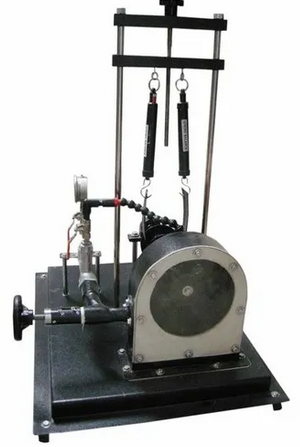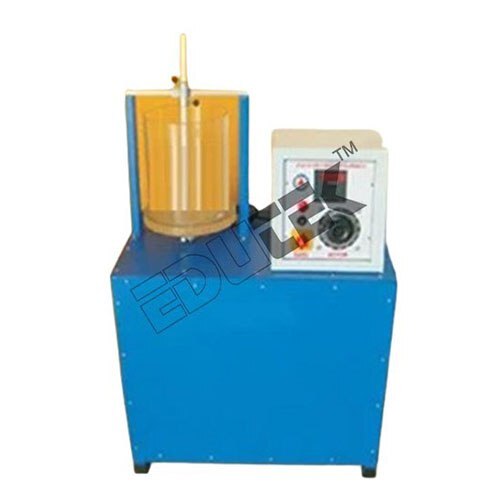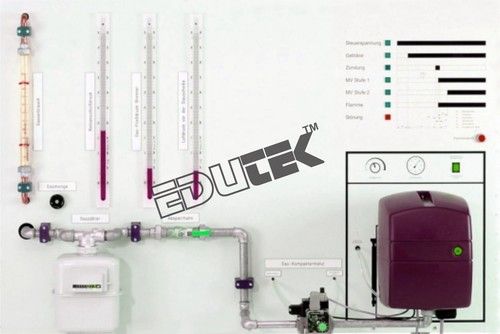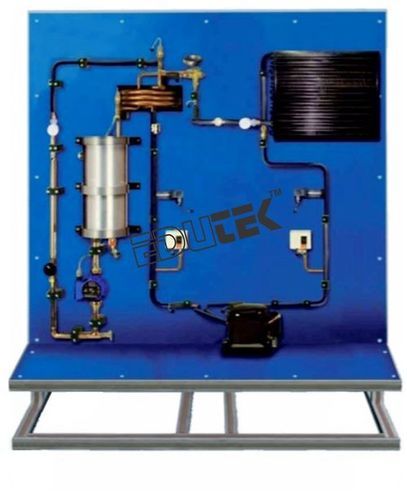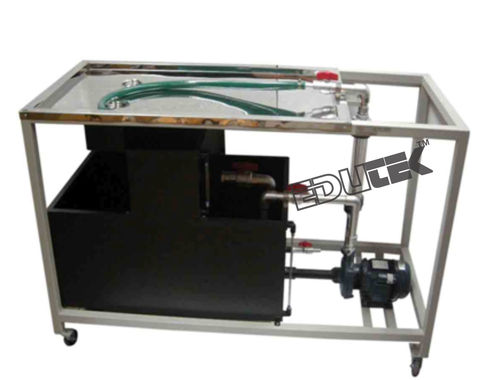Operating Principle of Pelton Turbine
Product Details:
X
Product Description
Operating Principle of Pelton Turbine
- Water turbines are turbomachines utilising water power. The Pelton turbine is part of the free-jet turbines resp. impulse turbines which convert the pressure energy of water into kinetic energy entirely in the control device. During the conversion, the water jet is accelerated in a nozzle and directed onto the vanes of the Pelton wheel tangential. The water jet is redirected by approximately 180° in the vanes. The impulse of the water jet is transmitted to the Pelton wheel.
- The experimental unit consists of the Pelton wheel, a needle nozzle used as control device, a band brake for loading the turbine and a housing with a transparent front panel. The transparent cover enables you to observe the water flow, the wheel and the nozzle during operation. You can modify the nozzle cross-section and thus the flow rate by adjusting the nozzle needle.
- The structure easily installed in the basic hydraulic bench.
- The unit composed of a small size Pelton turbine.
- Be made of stainless steel.
- Transparent plexiglass cover for flow visualization.
- Develop a power of about 10W.
- A bourdon type manometer (range 0·2.5bar) measure the inlet pressure.
- A portable digital tachometer allow the speed measurement.
- Two dynamometers should allow the torque measurement and.
- Easy to functionality.
- Sturdy construction.
- Negligible maintenance.
The following characteristics:
- Spring type dynamometer.
- Range 0F·10N with 0.1N division.
- Pipe of 110mm dia with venturi meter.
- Pelton Wheel: 300 mm Diameter with 18 Buckets.
- Sump tank capacity: 200 liters High Grade Plastic.
- Flow rate measurement: Orifice meter with Burdon type pressure gauge.
- Pump : Monoblock type, 4 litre/sec, Head 20 mtrs; Motor 5 HP.
- Piping with necessary Valves and Fittings.
- Digital RPM Indicator.
- Detailed Technical Manual and On-site Training.
Tell us about your requirement

Price:
Quantity
Select Unit
- 50
- 100
- 200
- 250
- 500
- 1000+
Additional detail
+91
Email
Other Products in 'Fluid Mechanics Lab Equipment' category
"We deal all over World but our main domestic market is South India"
 |
EDUTEK INSTRUMENTATION
All Rights Reserved.(Terms of Use) Developed and Managed by Infocom Network Private Limited. |



